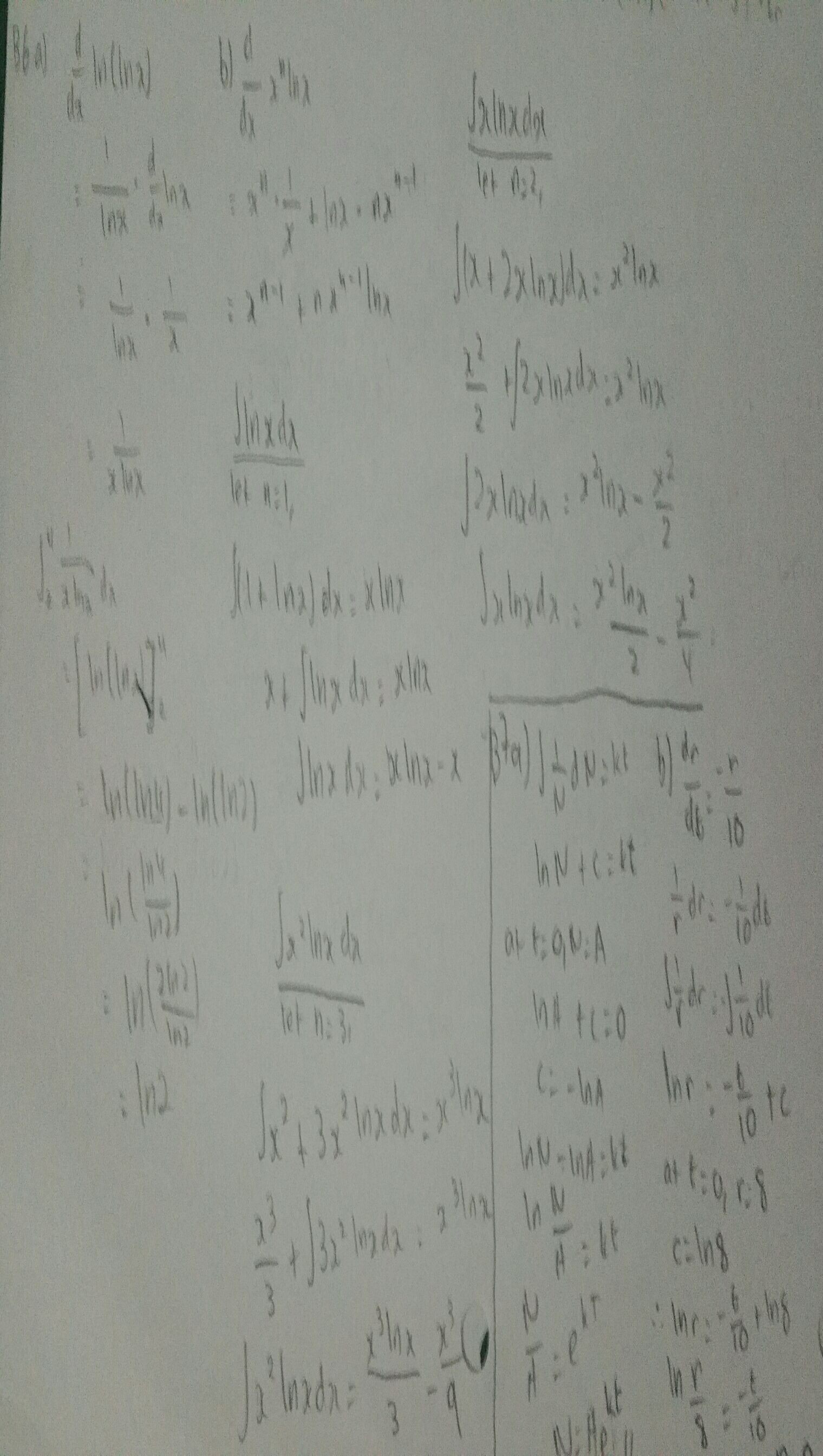Muhd Ilman Fahmi's answer to Henry Wang's Secondary 4 A Maths question.
done
{{ upvoteCount }} Upvotes
clear
{{ downvoteCount * -1 }} Downvotes
Pardon the handwriting
6a) Use chain rule. For the integration, you can use the identity for logs to simplify the answer to get ln2.
6b) Again chain rule. For each of the sub parts, substitute "n" to a suitable number to get the correct power. You can then manupilate the expressions to get what you want. Similary, you can do the same steps for x^m as well. Go try it!
B7a) You integrate the 1/N first and then manupilate the expressions by solving for c and getting the ans.
B7b) Your starting expression is dr/dt = -r/10, denoting that radius changes with respect to time at a rate of -r/10, as it decreases. Move the parts about and integrate respectively to get an overall constant contributed by both sides. Solve for C and manupilate to get the expression in terms of r. Substitute r with 4 and solve for t. Try it!
6a) Use chain rule. For the integration, you can use the identity for logs to simplify the answer to get ln2.
6b) Again chain rule. For each of the sub parts, substitute "n" to a suitable number to get the correct power. You can then manupilate the expressions to get what you want. Similary, you can do the same steps for x^m as well. Go try it!
B7a) You integrate the 1/N first and then manupilate the expressions by solving for c and getting the ans.
B7b) Your starting expression is dr/dt = -r/10, denoting that radius changes with respect to time at a rate of -r/10, as it decreases. Move the parts about and integrate respectively to get an overall constant contributed by both sides. Solve for C and manupilate to get the expression in terms of r. Substitute r with 4 and solve for t. Try it!
Date Posted:
7 years ago


